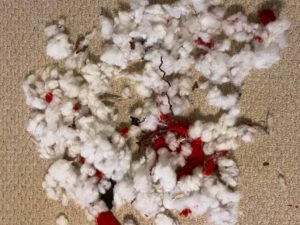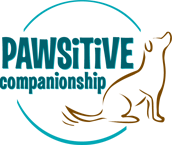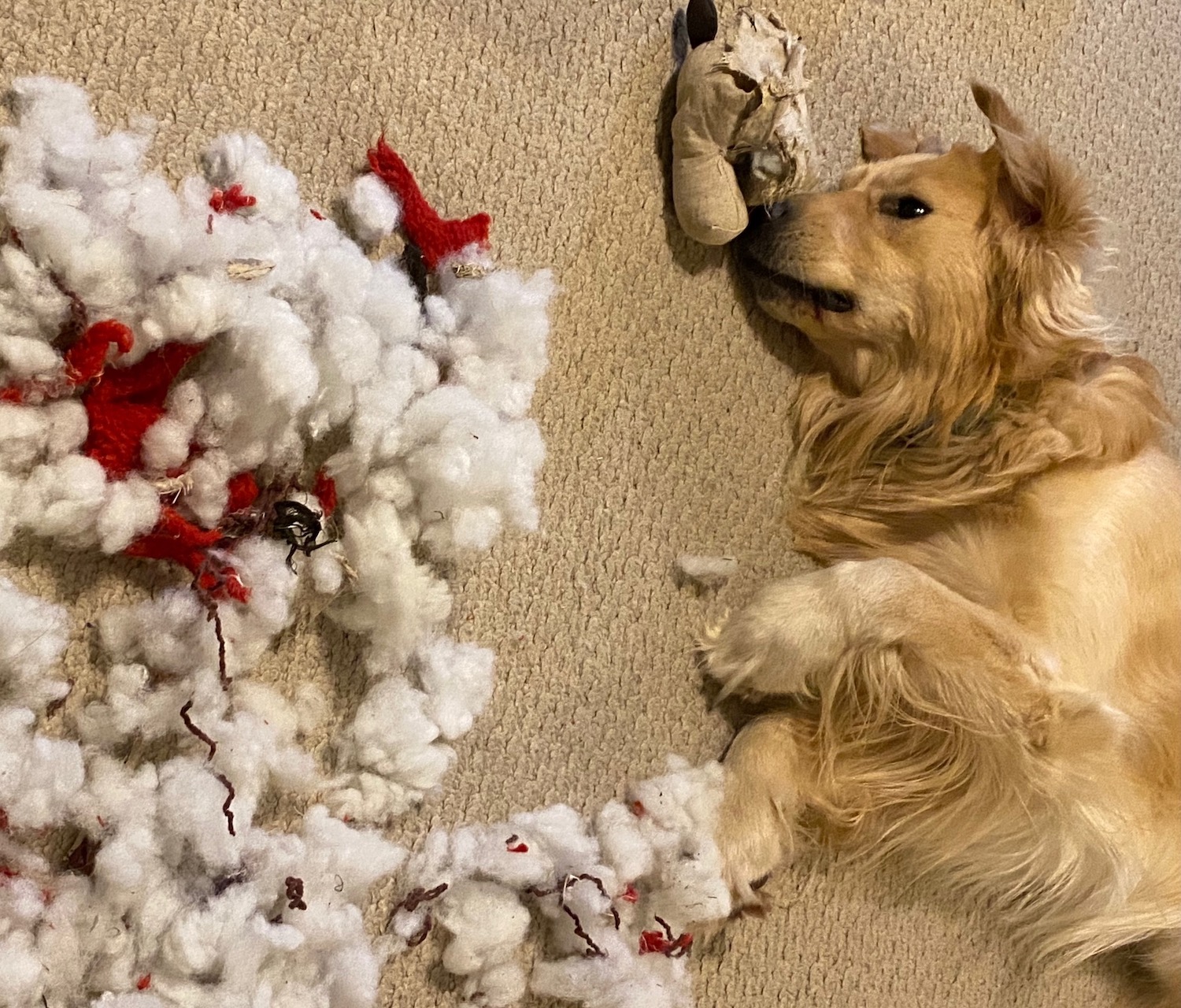Dog trainers are often asked for help when a client’s dog has surgery and is confined to a crate for several weeks. To ensure the dog doesn’t lose his or her mind during recovery, there are several enrichment ideas that we pass along so the dog’s caregiver can keep their dog happy, stimulated, and using their mind during the time the dog needs to remain quiet.
But what about those times when the caregiver has surgery and is told they are not to do anything strenuous for 6-8 weeks! How is the caregiver going to keep their dog happy and stimulated while taking time to recover?
I recently had surgery and found myself at home with my 2.5-year-old golden. Our daily walks to the park had to be put on hold. Our advancement in the CyberScent class I am taking with him was also put on hold since we are at the point of practicing in locations other than inside the home. Playing frisbee and tug, as well as flirt pole fun came to a sudden halt. While Hygge initially wondered what had happened to his person and was calm, gentle, and lay near me throughout the first few days I was back home, he soon found himself extremely bored and begging for things to do.
The following are some ideas I found helpful, and although I hope you never need surgery, in case you do, you may find them helpful too.
Sleeping in the crate
Using crates for our dogs can be a hot topic. I believe all dogs benefit from finding a crate a safe place to rest. Crates are invaluable when teaching a puppy to potty outside and not in the home, when traveling with a dog, when keeping a dog calm during the dog’s recovery after surgery, and based on my recent surgery, when we need time to heal. Hygge has been enjoying sleeping either on the bed with us or on his raised cot in our bedroom for several months now. After my surgery we needed him to sleep in his crate at night. Because the crate has been a happy, safe, relaxing area for him, he had no trouble adjusting to this new routine.
If necessary, your dog can be crated during the day while you rest. Crates that are in the bedroom allow your dog to be with you while you nap, without barking or whining if separated from you in their crate in another room. Dogs who are not used to going into their crate during the day can be lured inside with a yummy treat, such as a piece of cheese, chicken, or turkey hot dog, so you do not have to pick your dog up or take them by their collar and put them in their crate.
Ideas specific to your own dog
Knowing our dogs as well as we do, there are activities we can use that are individual to our dog and might not be helpful for all dogs. The following three activities came to mind based on my interaction with Hygge prior to surgery.
Tugging 2.0: I found myself playing tug with Hygge in a way that let him gain complete access to the tug toy shortly after we began to play. Surprisingly, this only increased his desire to bring the toy back to me and play again. I fancied he felt sorry for me in my feeble attempts to tug with him. Every morning began with Hygge bringing me the tug toy of the day, letting me hold it between two fingers while he had it firmly in his mouth. Any movement he made resulted in my quick release of the toy, at which time he brought it back to my hand. While this was fun, it certainly didn’t sustain him for long.
“Get it”: There is a silly game my husband and I started playing with Hygge. One of us stands in the doorway between our bedroom and den and tosses a treat into the den, telling Hygge to “get it”. He runs to the den, gets the treat, and turns to run towards the bedroom as he hears us say “get it” while tossing a treat into the bedroom. This goes on for a few minutes, leading to a tired dog. Sometimes he has a toy and starts running between the bedroom and den, jumping on the bed as he makes his turn as we encourage him to “run, run, run”. Hygge enjoys running and either of these simple games tires him, though not for long.
Soft toy destruction: Toys served me well, keeping him occupied for a period of time, especially if the toys were of his liking. Hygge loves to destuff squeaky toys or remove fabric from super chewer toys he gets in his monthly BarkBoxTM. It is fortunate that he does not eat any of the stuffing or fabric. When I need a bit of peace and quiet, I have given him a squeaky toy to destuff, keeping him busy for some time. Of course, the floor is a mess afterwards, but it is all worth it, as you can see from what was swept into a pile from his recent successful destuffing endeavor.
John and I laugh when he finds the squeaker, removing it and then promptly spitting it out. After one successful destuffing of a red heart, he carried around the red fabric for days, bringing it to me to tug from time to time. Inexpensive squeaky toys from the dollar store are worth every penny to see him happy and content after a successful destuffing.
Traditional Enrichment
There are several traditional enrichment ideas that can be used by a person recovering from surgery who is required to rest and avoid any strenuous activity.
Food Delivery Toys: If you haven’t already used these with your dogs, this would be a good time to begin. There are several available from the Kong Wobbler (https://www.hollywoodfeed.com/pid/17374/kong-wobbler-interactive-feeder-treat-dispenser) to the IQ Treat Ball (https://tinyurl.com/3rpmmjud). These keep our dogs busy for some time. You can make your own by using a cereal box you have cut holes in, putting your dog’s food in the box, and then letting them bat the box around so the food falls out. A snuffle mat (https://tinyurl.com/39hcpy38) is another way to have your dog spend more time eating his food. You can also scatter their food on the floor or ground outside, promoting hunting and sniffing, which is a species’ specific behavior and a wonderful way to let them eat their food. Another activity would be to teach your dog to “find it”. This can be a cue or signal for your dog to use his nose to “find” a few pieces of his kibble hidden around your home.
Teaching or revisiting behaviors: Teaching new behaviors or revisiting behaviors previously taught engage our dogs’ brains. Having your dog settle on a mat, raised bed, or dog bed is invaluable as you rest and recover. Working on loose leash walking in your home without the leash teaches or reinforces your dog walking with you instead of pulling you on walks. AKC offers virtual trick dog certification (https://www.akc.org/sports/trick-dog/). Any AKC CGC evaluator can evaluate video submissions of tricks you have taught your dog. Many of the tricks do not require strenuous activity, thus would be appropriate while you heal.
Having surgery and needing weeks of rest is not foremost in any of our minds. However, the day may come when you find yourself needing surgery. Looking over these ideas and planning for what you will do with your dog is not only a must for your health but also for your dog’s sanity. Hygge cannot wait for the day when we will be back to our usual daily routine! He’s not the only one!

